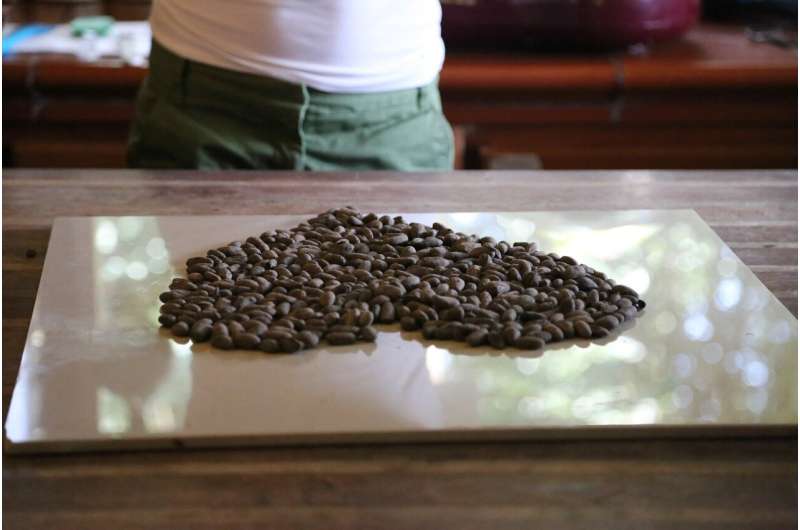This article has been reviewed according to Science X's editorial process and policies. Editors have highlighted the following attributes while ensuring the content's credibility:
fact-checked
trusted source
proofread
Standardized methodology measures cocoa household income

What data needs to be collected for the evidence-based design of strategies to ensure that cocoa farming households substantially progress towards or achieve a living income? Evidence-based strategies have to be designed to ensure cocoa farming households obtain a living income. How can data contribute to designing such strategies?
Wageningen University & Research, the Royal Tropical Institute (KIT), together with CIRES and EMC from Côte d'Ivoire, developed a standardized methodology including a questionnaire, for measuring cocoa farming household income. Using this will give insight into people's living income gaps and enable evaluation of the impact of interventions.
This methodology includes ways to shed light on the situation of often invisible groups such as 'sharecroppers' and other types of tenants, women, youth, and farmers who are often not known by cocoa buyers, chocolate manufacturers, or governments.
The World Cocoa Foundation (WCF) and the German Federal Ministry for Economic Cooperation and Development (BMZ) led the methodology. They worked in collaboration with the German Development Cooperation (GIZ) and the Swiss Platform for Sustainable Cocoa (SWISSCO).
The design was completed with input from numerous parties across the cocoa sector, such as the Alliance on Living Income in Cocoa, the Living Income Community of Practice, and representatives from producing country governments. In addition, NGOs, as well as various WCF member companies and civil society organizations also helped to complete this standardized methodology.
Optimizing investments for robust data on household incomes
There are different income measurement approaches used in the cocoa sector, ranging from using data for a limited number of indicators (e.g., sourcing transactions and farm mapping information) to more intensive approaches in which data is collected from households once every two weeks. This methodology optimizes investments and robustness and includes minimally required data to be collected as well as recommended approaches in case parties would like to learn more.
A large proportion of cocoa farming households cannot meet basic needs such as having sufficient quantities of nutritious food to eat, sending their children to school, or going to a doctor when they are ill. The majority are not able to afford a decent house, have money to pay for transport, or have a buffer for unexpected events such as the death of family members or lower yields because of droughts.
This also means that they are not able to invest enough money to increase their income. This methodology ensures that better data and insights become available in order to design effective interventions for different types of households. The aim is to substantially reduce and close living income gaps without excluding the poorest from interventions and markets they supply to.
With this methodology in hand, WCF, GIZ, and SWISSCO will conduct baseline studies on cocoa farming household incomes in Côte d'Ivoire and in Ghana. Similarly, other academic institutions, companies, NGOs, and government agencies can use the methodology in their own research and data collection, reinforcing a common standard for the entire industry.
More information: S. van der Haar et al, Cocoa household income study approach : A sector-wide approach to assessing the living income status of households in the cocoa sector, (2024). DOI: 10.18174/652510
Provided by Wageningen University





















